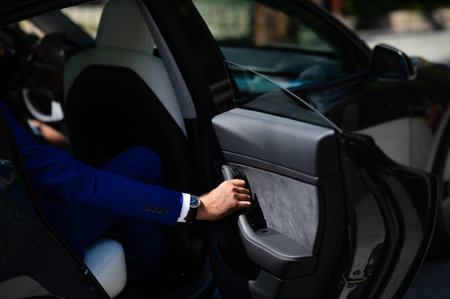What Is Telematics (Black Box) Car Insurance?
Telematics car insurance, often known as black box insurance, is a modern approach to car cover that’s rapidly gaining popularity across the UK. Unlike traditional car insurance policies that use broad factors like age, postcode, and claims history to calculate premiums, telematics insurance bases your premium on your actual driving habits. A small device—commonly called a ‘black box’—is installed in your vehicle or your mobile phone is used to monitor how, when, and where you drive. This includes details such as speed, braking style, cornering, mileage, and even the time of day you’re on the road. Insurers in the UK offer these policies primarily to encourage safer driving and help drivers, especially younger or less experienced motorists, access more affordable insurance options. The data collected gives insurers a clearer picture of your individual risk level rather than relying solely on statistics for your demographic group. As a result, careful and responsible drivers can be rewarded with lower premiums, while those with riskier habits may see higher costs. Telematics insurance stands out as an innovative solution for families looking to cut costs on young driver cover, or for anyone keen to prove their safe driving credentials and save money.
2. How Does a Black Box Work in the UK?
Black box car insurance, also known as telematics insurance, is becoming increasingly popular across the UK, especially among young drivers and families seeking more affordable cover. But what exactly happens when you opt for a black box policy, and how does it work in practice? Here’s what you need to know.
How Telematics Devices Are Installed
When you choose a black box policy, your insurer will arrange for a small device—known as a telematics box or simply a black box—to be professionally fitted in your vehicle. This process usually takes less than an hour and is often free of charge. Some insurers offer plug-and-play devices that fit into your car’s OBD port, while others use smartphone apps as an alternative. The installation process is straightforward and designed to avoid interfering with your car’s electronics or manufacturer’s warranty.
Types of Data Collected by the Black Box
The black box gathers a range of data points about your driving habits. Here’s a handy overview:
| Data Type | What It Measures | Why It Matters |
|---|---|---|
| Speed | Your speed on different roads compared to legal limits | Helps assess whether you’re driving safely within speed limits |
| Location & Time | Where and when you drive (e.g., night vs day, rural vs urban) | Certain times and places carry higher risks; affects your risk profile |
| Braking & Acceleration | How smoothly you brake and accelerate | Aggressive driving can indicate higher accident risk |
| Cornering | The sharpness and speed of turns taken | Harsh cornering can point to risky behaviour behind the wheel |
| Mileage | Total distance covered over time | Some policies are pay-as-you-drive, so mileage matters for pricing |
How Insurers Use Your Data in the UK
Your insurer analyses this collected data to create a unique driver profile or ‘driving score’. In practical family terms, think of it as having an impartial coach riding along, keeping tabs on everyone’s habits—from school runs to late-night trips home from Gran’s house in the countryside. This information directly influences your premium: safer drivers with higher scores may see reduced costs at renewal or even receive rewards like cashback or vouchers.
Your Privacy and Data Security
It’s natural to be concerned about privacy, but UK insurers must comply with strict GDPR rules. Your personal information is only used for insurance purposes and won’t be shared without your consent, except where legally required.
A Real-World Example from British Roads
Take the Smith family from Manchester: after fitting a black box in their daughter’s first car, they found their premium dropped by 30% at renewal thanks to her careful driving habits—no speeding tickets or harsh braking recorded on those busy city streets!
![]()
3. Benefits and Drawbacks of Black Box Insurance
Black box, or telematics, car insurance has become increasingly popular across the UK—particularly among young drivers and families looking to manage costs and encourage responsible driving habits. But as with any insurance product, its important to weigh both the upsides and potential downsides before deciding if it suits your needs.
Advantages: Savings and Safer Driving for Young Drivers & Families
For many young motorists, finding affordable car insurance can feel like an uphill battle. Black box policies can offer a practical solution. By fitting a small device in your car to monitor how you drive—tracking things like speed, acceleration, braking, and even what time of day youre on the road—insurers can reward safe habits with lower premiums. This is especially helpful for new drivers who are typically seen as higher risk.
Families benefit too, particularly when adding teenagers to a family policy. If everyone in the household demonstrates careful driving, it may help keep overall costs manageable. Some insurers even provide regular feedback or driving scores through an app, turning safe driving into a bit of a friendly competition between family members.
There’s also a safety angle: knowing that your driving is being monitored often encourages better behaviour behind the wheel—think fewer late-night dashes or risky overtakes—which ultimately helps keep everyone safer on Britain’s busy roads.
Potential Disadvantages: Privacy Concerns and Driving Restrictions
Of course, black box insurance isn’t without its drawbacks. One common concern is privacy: some people feel uncomfortable with an insurer tracking their every move—even if it’s all done securely. While most providers assure customers that data is only used to assess driving style and set premiums, it’s still something to consider if you value your independence.
Another potential downside comes in the form of restrictions. Many black box policies set curfews or limit driving during certain hours (such as late at night), which can be inconvenient for shift workers or those who need flexibility for family commitments.
Lastly, not every journey goes smoothly—unexpected hard braking or quick accelerations might happen from time to time. If these incidents are frequent, they could negatively affect your premium or result in warnings from your insurer.
Is Black Box Insurance Right for Your Family?
Ultimately, whether black box insurance works for you depends on your personal circumstances and comfort level with technology. For families keen to save money while promoting responsible driving habits—especially for teens just starting out—it can be an excellent option. However, if you’re concerned about privacy or restricted by policy rules, it’s worth comparing traditional insurance options before making a decision.
4. Who Should Consider Black Box Car Insurance?
Telematics, or black box, car insurance is not just for young drivers—although it’s often marketed that way. In reality, this type of policy can be a practical and cost-effective solution for various types of UK drivers and families. Understanding who stands to benefit most can help you decide if it’s the right choice for your household.
Ideal Candidates for Black Box Insurance
| Type of Driver/Family | Why It’s Beneficial | Practical Example |
|---|---|---|
| Newly Qualified Drivers | Typically face high premiums due to lack of experience; black box policies reward safe driving with lower costs. | Sarah, 18, just passed her test. With a black box, her cautious habits are rewarded, reducing her annual premium by £500 compared to standard quotes. |
| Parents with Teenage Drivers | Provides reassurance through tracking and encourages responsible driving; some policies offer parental dashboards to monitor journeys. | The Patel family added their son, Ravi, to their policy. They receive monthly driving reports and set curfews through their insurer’s app. |
| Drivers Seeking Lower Premiums | If you drive fewer miles or during off-peak times, telematics can significantly reduce your costs versus traditional insurance. | A retired couple in Manchester rarely drives at night and covers under 5,000 miles a year. Their telematics policy reflects this low-risk behaviour with a substantial discount. |
| Cautious Drivers with Clean Records | Your careful approach is recorded and rewarded; some providers offer no-claims bonuses faster for consistently safe driving. | Tom has always driven safely but felt penalised by generic pricing. With a black box, his excellent driving earns him a no-claims discount after just one year. |
| Urban Families with Multiple Cars | Families can benefit from multi-car black box policies, keeping all members premiums down while encouraging safe habits across the board. | The Davies family insures three cars under one telematics policy and enjoys lower group rates as all members maintain good driving scores. |
Things to Consider Before Choosing Telematics Insurance
- Your Driving Habits: If you regularly drive late at night or have long commutes on busy roads, your premium might not decrease as much as you hope.
- Willingness to Be Monitored: Some people find the idea of having their journeys tracked intrusive. Make sure everyone on the policy is comfortable with this arrangement before committing.
- Mileage Limits: Many policies come with mileage caps or extra charges if you exceed agreed limits—ideal for occasional drivers but potentially costly for high-mileage users.
- Younger Siblings: Parents often find telematics useful when younger siblings start learning to drive, creating a culture of careful motoring within the family.
The Family Perspective: Real-Life Application
The Smiths from Bristol found themselves facing sky-high quotes when their eldest daughter got her licence. By opting for a black box insurance policy, they not only saved hundreds of pounds per year but also gained peace of mind knowing they could keep an eye on her speed and route choices. Over time, the whole family became more conscious of their driving habits—a win-win situation that made financial sense and kept everyone safer on the road.
5. Understanding Costs, Discounts, and UK-Specific Terms
One of the biggest draws of telematics (black box) car insurance in the UK is its potential to lower premiums, especially for younger or inexperienced drivers. But how exactly are these costs calculated, and what savings can you really expect? Let’s break down how insurers work out your premium, what discounts are on offer, and key British terms you’ll hear throughout your journey.
How Are Telematics Premiums Calculated?
Unlike traditional car insurance, where your premium is mostly set by age, postcode, car value, and driving history, telematics insurance bases your cost on real-world driving data. The black box records factors such as speed, acceleration, braking habits, cornering, and even the time of day you drive. If you tend to drive during rush hour or late at night – times statistically linked to higher accident rates – this could affect your score. Safer drivers are rewarded with lower premiums when their policy renews, making it a fairer system for those who genuinely drive carefully.
What Discounts Can You Achieve?
Most UK insurers offer immediate discounts just for choosing a telematics policy—sometimes up to 25% off compared to standard cover. But the real savings come if you prove yourself as a responsible driver over time. With regular feedback through an app or online portal, you (or your teen driver!) can see which habits need improving to unlock further discounts at renewal. Some policies even give mid-term rewards or cashback for top scores. Families often find this motivates young drivers in the household to adopt safer habits behind the wheel.
Key British Insurance Terms Explained
No-Claims Bonus
This is a staple of British car insurance. Each year you go without making a claim builds your no-claims bonus (NCB), which can lead to substantial premium reductions—sometimes over 60% after five years! Telematics policies in the UK typically honour NCBs just like standard insurance does.
Pay-How-You-Drive
This term refers to a pricing model where your premium is directly influenced by your recorded driving behaviour—good scores mean cheaper cover. In some cases, if risky driving patterns persist, your insurer may increase your premium or even cancel your policy. This approach encourages safe habits and offers a transparent way for families to manage motoring costs together.
Other Useful Terms
- Black Box/Telematics Device: The hardware installed in your car that records driving data.
- Curfew: Some policies impose restrictions on night-time driving for younger drivers.
- Driving Score: A rating provided by your insurer based on analysis of all telematics data collected.
Understanding these costs and terms helps British families make informed choices about whether telematics insurance is right for them—and how they can maximise savings while promoting safer roads.
6. Common Misconceptions and FAQs in the UK
Addressing Typical Worries and Assumptions about Black Box Insurance
Telematics car insurance, or black box insurance, has become increasingly popular among UK families—especially those with young drivers. However, there are still many myths and concerns that can cause confusion. Here, we answer some of the most common questions UK households ask about how black box insurance works in practice.
Will the black box spy on everything I do?
No, it won’t record conversations or track you beyond your driving. The black box only measures driving behaviour like speed, acceleration, braking, and the times you drive. It’s not listening to your calls or monitoring where you go once you’ve parked up at Tesco!
If my child makes a mistake, will their insurance be cancelled straight away?
Not usually. Most insurers will give warnings and advice first if they spot risky driving patterns. Cancellation is rare unless there’s repeated dangerous behaviour. Many policies even offer helpful feedback to improve skills over time.
Is telematics only for new or young drivers?
No, it can benefit experienced drivers too. While black box insurance is popular with young motorists due to high premiums, families with older drivers or those who drive less frequently can also save money by proving they’re safe on the road.
Will having a black box increase my premium if I’m a good driver?
On the contrary, careful driving usually leads to lower renewal quotes and sometimes rewards like cashback or discounts. The safer you drive as a family, the more likely your premiums will drop.
Does installing a black box mean I have to drive perfectly all the time?
No one expects perfection! The system looks at overall patterns rather than single incidents. Occasional hard braking or late-night trips won’t ruin your score as long as they aren’t regular habits.
Quick Tip for UK Families:
If you’re worried about privacy or misunderstandings, speak directly with your insurer—they’ll explain exactly what data is collected and how it’s used to help your family stay safe and save money on car insurance.
7. How to Choose and Set Up a Telematics Policy
A Step-by-Step, Family-Friendly Guide
Choosing the right telematics car insurance policy in the UK can feel daunting, especially for families navigating it for the first time. Here’s a practical guide that breaks down each step, ensuring you select the best provider, understand the small print, arrange installation smoothly, and get everyone in your household on board.
Step 1: Compare Providers
Start by gathering quotes from several reputable insurers that offer black box policies. Use UK comparison websites like MoneySuperMarket or Compare the Market for an overview. Don’t just look at the price—consider customer reviews, app usability, and what features are included (such as feedback on driving habits or theft tracking).
Step 2: Read the Small Print
This is crucial. Every insurer will have different terms regarding curfews, mileage limits, and what constitutes ‘safe driving’. For example, some may charge extra if you drive after 10pm, while others reward low-mileage drivers. Sit down as a family and discuss any restrictions that might affect your daily routines—especially if multiple people use the car.
Step 3: Arrange Your Installation
Once you’ve chosen a policy, the insurer will arrange for a black box to be installed in your vehicle. Most providers send an engineer to your home or local garage within two weeks. Make sure all regular drivers know when this is happening and how long it will take (usually less than an hour). Some newer policies offer self-install plug-in devices—check if this is an option for added convenience.
Step 4: Get the Whole Household Involved
It’s important that everyone who drives the insured car understands how telematics works. Hold a quick family meeting to explain how journeys are monitored and why careful driving benefits everyone—safer roads and potentially lower premiums next year! Encourage younger drivers to view their driving scores on their insurer’s app so they can track their progress and stay motivated.
Family Tip:
Set up shared goals—for instance, agree to avoid late-night drives where possible or take turns reviewing driving feedback together over Sunday lunch. Making it a family effort not only keeps premiums down but also encourages safer habits for all ages.
Step 5: Review Regularly
Don’t set and forget! Check your policy’s online dashboard every month to see how your driving is being rated. If you spot issues (like frequent harsh braking or speeding), use them as learning opportunities for everyone in the household. And remember—if your circumstances change (new job with longer commute, new driver in the house), update your insurer promptly to keep cover valid and prices fair.
Selecting and setting up a telematics policy doesn’t have to be overwhelming—with these steps, UK families can confidently embrace black box insurance and make it work for everyone in their home.


